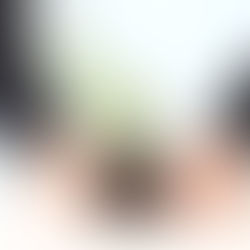On the Making of "Memorial" (The Daisy)
I can never keep Hans Christian Andersen out of my head. He wrote stories on so many subjects; some have clear morals like The Ugly Duckling or The Red Shoes, while others are a little more vague. The Daisy is one of those-- markedly depressing and innocent-- which leaves some questions. I don't generally like to tell people what to get out of art, so when I found a dead bird in my back yard (more of my stories begin like this than is probably normal!) I figured drawing a few connections between it and the lark of the afeorementioned story would leave enough mystery to make this little curiosity intellectually interesting.
In case you haven't read The Daisy, you can do so here.
For the first part, I have to credit Nature; it did a fantastic job cleaning up the bones. I was even lucky enough to have some of the sinew left intact to make piecing everything back together a bit easier. The rest of the work involving the skeleton was lots of picture-referencing, scrubbing, gluing, and wiring. Each bone was attached with jeweler's glue and had to be held in place for up to ten minutes at a time.
Cleaning the feathers was one of the most delicate parts. Each one was brushed gently using an eyebrow/eyelash comb/bush combo. They were attached with jeweler's glue as well, and placed to hide the wires holding together the spine.
A neat little fact: that withered black lump inside the bird is its mummified heart.
Of course, the "lark" (Okay, it's an American Robin... sheesh) had to go into its prison with the Daisy, and the Daisy with the grass, so that was the next order of business.
Everything all laid out. I couldn't resist using birch for the base and perch!
To make the daisy patch, I began by drying the daisy upright in a flask in my oven. Once it was nice and crispy, I soaked it in water for about an hour so that I could re-shape its leaves to "hug" the dirt mound, which was a mixture of soil and acrylic polyurethane.
Once together, the whole thing was given a good coat of polyurethane and set atop a heat source to dry.
Heat source = wax melter & glass coaster. Very professional.
Finally, individual grasses were teased apart, snipped (to give the imnpression of having been eaten, as in the story), and attached with polyurethane.
I really didn't want anything decaying!
The last thing to do was get everything in place: Lark on perch, Daisy below, story behind. The rest of the feathers were added once I knew where the Daisy was going so that I could give it a properly "sheletered" look by the feathers.
It all fit, just barely.
In the end, I wanted this thing to feel like an old curiosity, reminiscent of something you'd find in an old Biology classroom, but with a story behind it-- and maybe a little heart.















